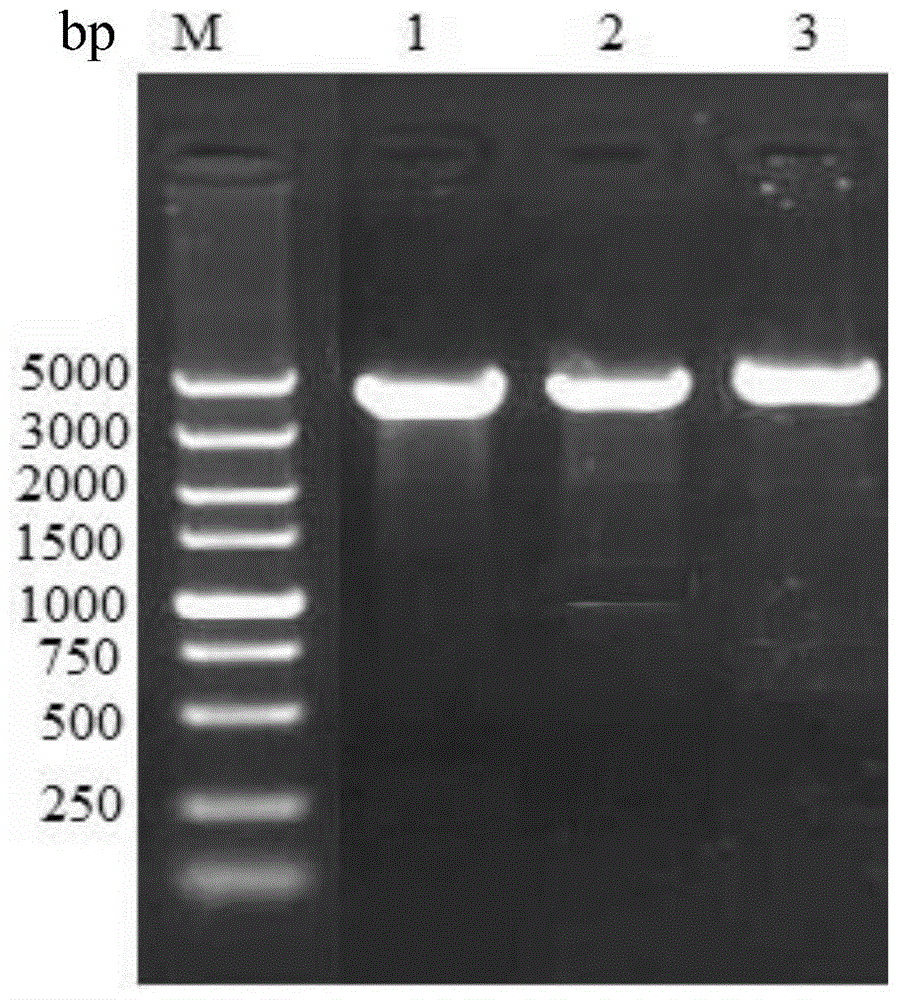Construction and application of RNA interference expression vector targeting ifnar2 gene
A technology for expressing vectors and genes, applied in the field of molecular biology, can solve the problem that there is no guidance for IFNAR2 gene interference research.
- Summary
- Abstract
- Description
- Claims
- Application Information
AI Technical Summary
Problems solved by technology
Method used
Image
Examples
Embodiment 1
[0032] Embodiment 1 is aimed at the construction of the RNA interference plasmid vector of IFNAR2 gene
[0033] 1. Design and synthesis of oligonucleotide sequences expressing siRNA of IFNAR2 gene
[0034] According to the nucleotide sequence of the IFNAR2 gene (GenBank No: HQ665551), the DNA sequences of several siRNAs targeting the IFNAR2 gene mRNA sequence were designed and screened, and they were separated to form an auxiliary sequence (loop region) of a "hairpin" structure. The positive-sense strand of the "hairpin" siRNA was added at both ends for pSilencer4.1-CMV neo (purchased from Ambion, schematic diagram as shown in figure 1 shown), the complementary sequence of the sense strand is used as the antisense strand, and the linker sequences for pSilencer4.1-CMV neo are added to the two ends of the antisense strand respectively, and the two anneal to form a linker sequence for pSilencer4.1- shRNA for the linker of CMV neo.
[0035] Further screening obtained three pairs...
Embodiment 2
[0050] Example 2 Detection of interference efficiency against IFNAR2 gene mRNA interference plasmid
[0051] 1. ST cell (porcine testis cell) culture, plasmid transfection and extraction of total RNA and total protein
[0052] 1. The ST cell line comes from the China Center for Type Culture Collection (CCTCC, Wuhan), and is subcultured and preserved by our laboratory according to conventional methods.
[0053] 2. Using Promega's TransFast TM Transfection Reagent (Promega Product No. E2431) is used to transfer three kinds of interfering plasmid vectors that interfere with IFNAR2 gene expression into ST cells. The specific transfer steps refer to the actual instructions, which are briefly described as follows:
[0054] (1) Cell seeding: In order to obtain the best transfection efficiency, the cell density should be 50-80%. In a 24-well cell plate, the ideal condition is to inoculate 8×10 cells per well 18-24 hours before transfection. 4 ~2×10 5 cells;
[0055] (2)TransFast...
PUM
 Login to View More
Login to View More Abstract
Description
Claims
Application Information
 Login to View More
Login to View More - R&D
- Intellectual Property
- Life Sciences
- Materials
- Tech Scout
- Unparalleled Data Quality
- Higher Quality Content
- 60% Fewer Hallucinations
Browse by: Latest US Patents, China's latest patents, Technical Efficacy Thesaurus, Application Domain, Technology Topic, Popular Technical Reports.
© 2025 PatSnap. All rights reserved.Legal|Privacy policy|Modern Slavery Act Transparency Statement|Sitemap|About US| Contact US: help@patsnap.com



